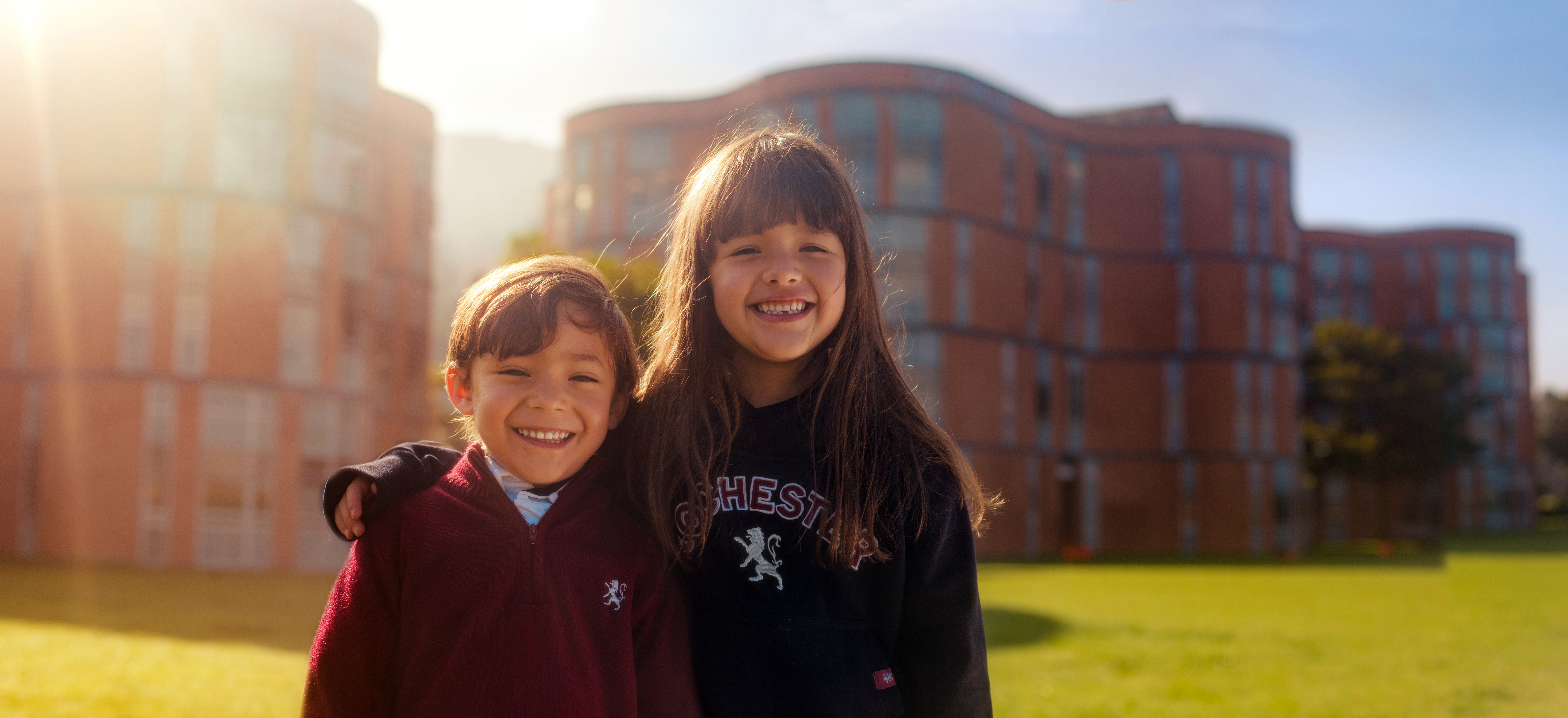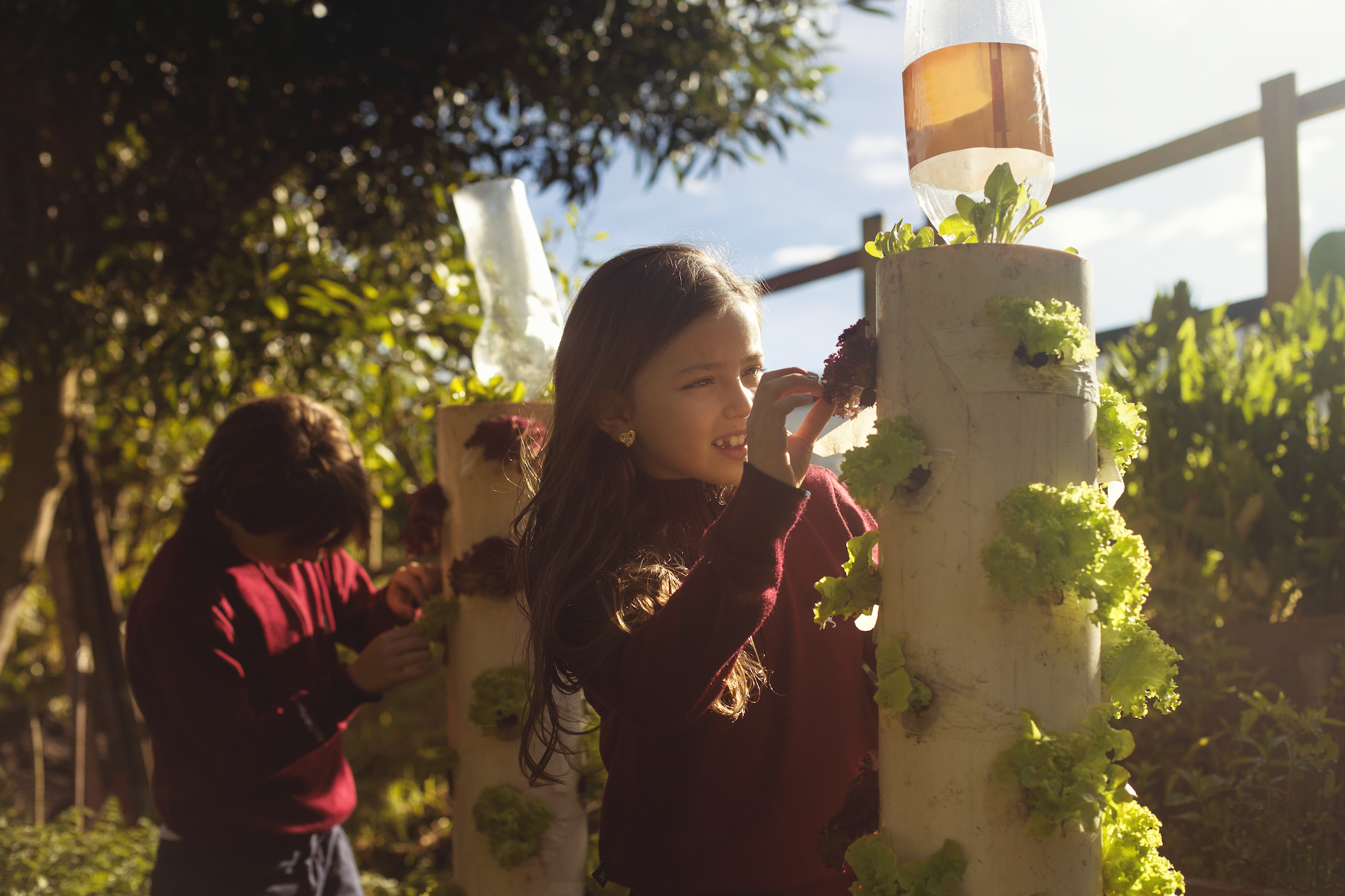
Photo Credit: Rochester School
The Rochester School in Chía, Colombia, was the first school to re-open in the country following the start of the COVID-19 pandemic. The school is a stunning example for how, by ensuring a healthy and safe learning environment through LEED green building certification, their students and faculty are provided a higher standard of living.
Additionally, the school’s investment in reopening would have been much higher if it hadn’t already been LEED certified. LEED certification laid the foundation for a healthy space: Their resiliency has allowed it to easily adapt to comply to biosafety protocol required as a result of COVID-19 and reopening strategies recommended by both the World Health Organization and the Colombian government.
The Rochester School originally achieved LEED Gold certification in 2014 with 64 points as part of the school and community leaders’ desire to create a healthy learning environment and provide lifelong sustainability lessons to its students and large community. And in 2019, the school recertified to LEED Gold at 78 points, becoming the first school in Latin America to recertify to LEED’s standards.
The school’s recertification process was led by their sustainability team, with the support of its operations and management team and the Rochester community, and leveraged the Arc performance platform to track their indoor environmental quality data and gain insight into their occupant satisfaction in the areas of indoor air quality, daylight availability, indoor lighting quality, and access to outdoor views. Because the school strives to provide high-quality learning environments, the team was pleased to find that occupant satisfaction ranked high.
In fact, Rochester School received a scholarship to participate in the 2021 cohort of the Building Learners program, which is a K-12 education program that uses the operations of a school building to teach students about sustainability and empowers students to use their building as a learning laboratory. Students collect, analyze, and conduct real-world investigations that inform improvements around waste, energy, water, health, and transportation at their school. The school has already been working on tracking their school’s operations data in Arc, and now they will begin involving students. Using curriculum provided by the U.S. Green Building Council via its Learning Lab online education platform, Rochester students will learn about green buildings, benchmarking, and resource use, and then propose action projects and campaigns to build campus-wide buy-in; as well as STEM, leadership, and communication skills among students.
Photo Credit: Rochester School
A commitment to sustainability actions runs deep within the school. They lead biodiversity conservation projects and promote the protection of species in Colombian ecosystems, incorporating learning and creating strong conservational ties in students throughout. They’ve also engaged the entire city of Chía in projects to plant more than 1,000 native species of trees and clean nature areas.
The benefits of being a school with a high level of performance in sustainability are made evident not only by the day-to-day occupant satisfaction and opportunities to connect sustainability curriculum to building design and performance, but also in the influence on the community. Through the sustainability initiatives in school, the larger community has been inspired to transform their habits to reduce their impact on the environment. And the project is serving as an international model for other educational and governmental institutions – it routinely hosts visiting tour groups from other nations, fulfilling its purpose of being a live classroom that creates a sustainable and systems-aware generation of citizens.
This story originally appears at Living Standard. Living Standard is the U.S. Green Building Council’s campaign to support its inclusive and resilient vision that healthy people in healthy places equals a healthy economy. An initiative created for sharing personal experiences, best practices, and the benefits of building green, Living Standard seeks to create awareness and adoption of healthier spaces, and to champion a better quality of life for people around the world. Share your story today at livingstandard.org.

